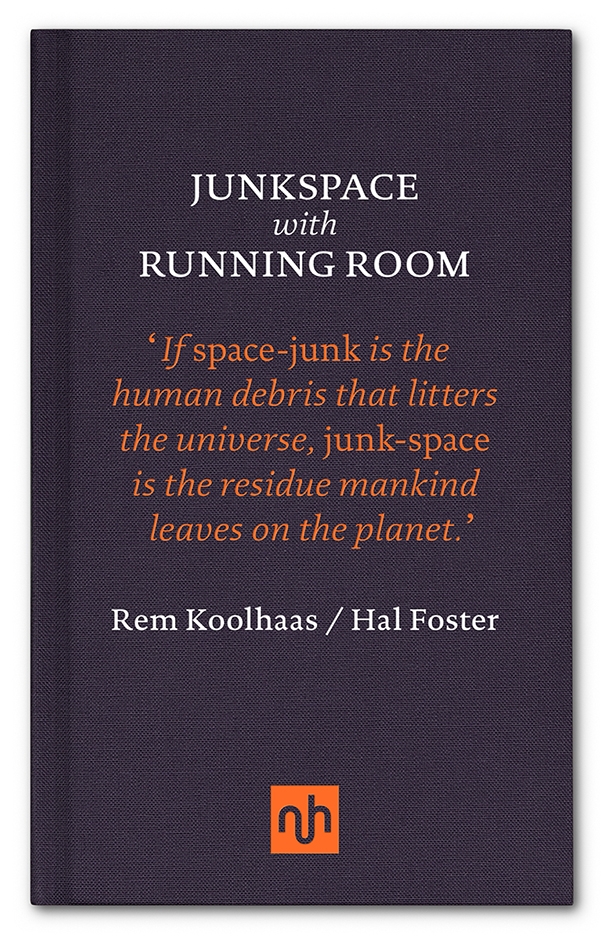Originally published in 2001, ‘Junkspace’ is arguably the last of Rem Koolhaas’s dynamic interventions in architectural thinking. It was republished, along with Hal Foster’s ‘Running Room’, the following year in the 100th issue of the journal October, a special on ‘obsolescence’. The two are repackaged here (and in the case of Foster’s essay, revised as well), notionally so that they can be reexamined in the context of a postcrash world.
Inspired by the dominance of the shopping mall and written to the rhythm of the billboard advertising slogan, ‘Junkspace’ describes a bleak world of capitalism without ethics, society without politics and art without truth. ‘Because we abhor the utilitarian we have condemned ourselves to a lifelong immersion in the arbitrary,’ Koolhaas writes near the beginning. ‘“Identity” is the new junk food for the dispossessed.’ Because – thanks in part to elevators and air conditioning – shopping malls blend with everything from cultural centres to transport hubs, all space is part of the same blur, in which branding is the only sign of difference.
Leaving aside that Koolhaas is perhaps the best critic of his own discipline, the fact that his office, OMA, is now constructing – through the creation of iconic buildings or masterplans – the future economic centres of our postcrash world, from Beijing to Doha, makes his assessment doubly intriguing. Because in ‘Junkspace’ there is a degree to which he is flagellating himself.
Foster’s essay, written in his breezily accessible but more conventionally academic style, riffs on Koolhaas’s essay to examine the fusion of the subject of consumerism and the ‘constructed subject’ of postmodernism in the twenty- first century. The transition from one essay to the next is, if you like, from the architectural to the personal. Which prompts Foster to respond to Koolhaas with an argument for autonomy – both disciplinary (from one art to the next) and (by implication) personal – in order to find space (or the running room of the title) within the junk in which Koolhaas suggests we have drowned. And whether you are at an airport an art fair, that’s something we all need.
This article was first published in the May 2013 issue.
